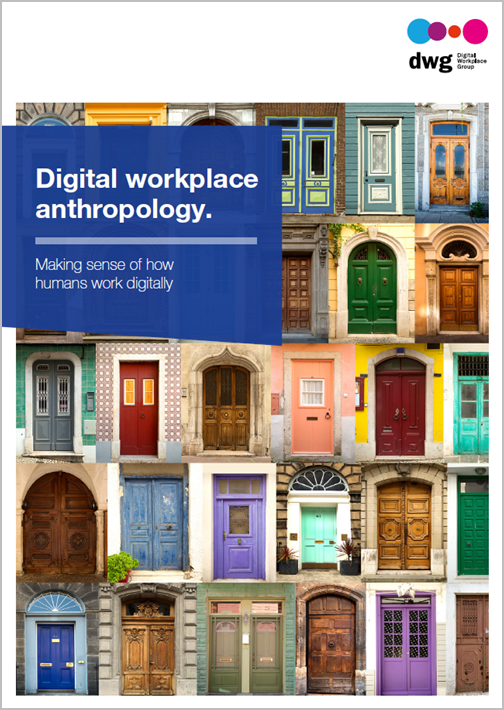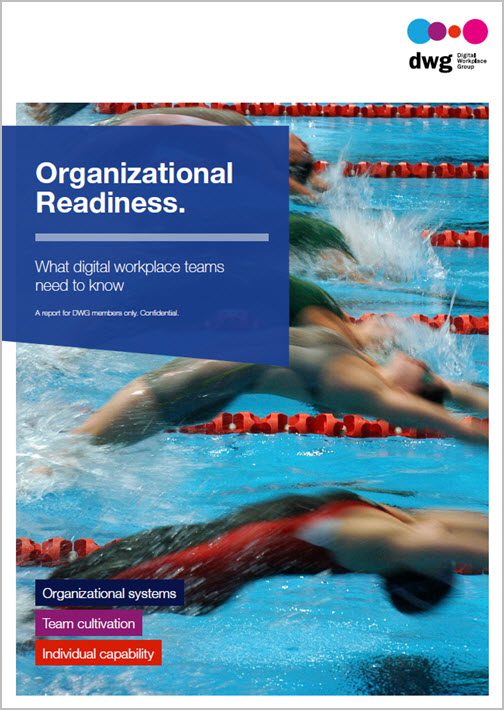Putting people at the centre of digital transformation
For decades, information technology (IT) solutions have focused primarily on technology features and functions, with the people impacted by them appearing to be only a secondary consideration. How did this situation arise? The answer is probably related to the history of IT development and delivery. In its early days – the era of mainframe computers and batch processing – very few people were actually affected by the IT being deployed, so developers had little cause to think about the people who would use the technology solutions they were creating. As time went on though, and IT started to impact more people (the end users) more directly, for some peculiar reason the need to adapt to this changing situation was not recognized. The emphasis remained on the technology, with little thought given to the users, or whether these people were adequately prepared and ready to use the new IT effectively. This paradigm has existed for decades. It still happens today. The people impacted by IT change (nowadays known as ‘digital transformation’) are, in the main, still a secondary consideration.
Why do digital transformation projects fail?
Across the decades, IT solution failures have remained high. Regardless of the quality, correctness or feature-richness of these solutions, many have failed to deliver on business needs or to meet the expectations of the people using them. Despite this, it appears IT developers still fail to grasp the root cause.
The reason is simple. As change management experts Jeffrey Hiatt and Timothy Creasey sum it up: “The right answer is not enough.”1 IT projects have focused on designing and developing ‘perfect’ technology solutions rather than adequately considering what is needed to prepare people to use those solutions effectively in ways that will deliver business value. “Just having a solution that is technically ‘right’ does not guarantee that employees will make the necessary changes to their behaviours and work processes,” explain Hiatt and Creasey. Time, effort and money are all required to prepare people for change and bring them to the point where they are ready and eager to adopt that change. “The right answer alone does not create buy-in… the right answer alone does not create commitment… the right answer alone does not mitigate resistance or eliminate fear.” 1
Even the most perfectly architected, designed, built and tested solution will be deemed a failure if the people expected to use it have not been appropriately prepared and it does not enable them to perform their work effectively. As Isaac Sacolick has observed: “IT loves solutioning and implementing… in addition, business stakeholders often demand fast results… this often results in teams feeling pressure to dive into implementation, miss key communication steps, and skip building a [people focused] change management programme at the start of a digital transformation initiative.”2
The importance of a people-centred approach
This lack of a people, or human, focus has been at the heart of many digital transformation failures. Paul Miller and Shimrit Janes, in their book Nature of Work, describe perfectly the human nature of an organization: “Rather than a machine, your organization is a living, dynamic system that can’t be programmed… instead, it thrives through relationships, adaptive structures, diverse networks of people, the spaces they occupy, the tools they use, the knowledge and intelligence they pulsate with.”3
When you consider this statement, it becomes evident that by focusing solely on the “tools they use”, the developers of IT solutions are looking at the tip of the iceberg only. There is so much more that needs to be considered! As the DWG report on Digital workplace anthropology shows, too often “in the rush to establish a digital workplace”, there has been an overreliance on surveys and other data to understand “human needs”.4 By relying solely on this data, “we can miss the richness and texture of a human’s thoughts, feelings and underlying motivations… humans are not rational, logical beings… they defy the binary”.4 This fundamental failure by technology solution developers to focus on preparing people for the solution being implemented is at the root of so many technology solution failures. It will only be by placing people at the centre of digital transformation initiatives, rather than product features and functions, that we will start to deliver solutions that attain higher success levels and significant business value.
The future for digital transformation – 4 steps to success
Now, we find ourselves in a cloud-based digital transformation world, where the power of the technology developer is starting to diminish and the opportunity to take a much more people-focused perspective is emerging. This is an era of predefined cloud services in which the primary focus should be on preparing people to use services rather than on designing and developing the services themselves. But old habits die hard and, despite this move towards a cloud-based service delivery model, the focus of too many projects is still on the features and functions rather than the people.
So, what needs to be done to place people at the centre of digital transformation? There are at least four critical steps that should be taken:
- Business executives should actively sponsor digital transformation projects and ensure these are driven from a people perspective rather than a technology viewpoint.
- The people side of change requires adequate investment; at least 20% of the budget for a digital transformation project should be allocated to people readiness.
- A people-focused Change Team should be an integral part of every digital transformation project; this Change Team must have a voice that is equal to and can counterbalance the technology development voice.
- Considering the impact on people needs to be embedded into every project activity; for instance, in an agile development environment, developers must consider the impact a proposed solution will have on the people adopting the solution in every task, in every sprint.
These new ways of working affect everybody engaged in digital transformation projects: sponsors, managers, architects, designers, developers, testers and service management. Everyone is responsible for understanding and acting on the impact a proposed feature or function will have on those who will use the solution.
Why we must change our digital transformation now and not later
As we take the next big step in digital transformation and move ever closer to a world where artificial intelligence (AI) is embedded in everything we do in the workplace, dealing with this challenge is now more critical than ever. Effectively preparing people for AI adoption is likely to be the single most crucial factor for this new technology to be successfully embraced and utilized.
AI has already started to earn a bad reputation, with many expressing doubts about its use and safety. Suppose the deployment of AI takes the traditional path, with the focus on all the ‘cool’ technology rather than on the readiness of people who will make use of it; in this scenario, there is every likelihood that high levels of resistance will result. Failure to address these concerns and to prepare people effectively will likely mean adoption of AI is a long and painful affair. This challenge will impact every organization that is moving towards AI solutions. Today, the big question is: ‘How are you planning to prepare your people for AI?’.
References
1 Jeffrey M Hiatt, Timothy J Creasey (2012). Change management: The people side of change. Loveland, Prosci Inc, (store.prosci.com/change-management-people-side-of-change-ca.html).
2 Isaac Sacolick (2023). 7 sins of digital transformation. IDG Communications Inc, CIO, (www.cio.com/article/656508/7-sins-of-digital-transformation.html).
3 Paul Miller, Shimrit Janes (2021). Nature of Work: The new story of work for a living age. London and New York, TECL Publishing (natureofwork.com).
4 L Vargus (2021). Digital workplace anthropology: Making sense of how humans work digitally. DWG Research (digitalworkplacegroup.com/reports/digital-workplace-anthropology).
Related resources
Digital workplace anthropology:
Making sense of how humans work digitally
Organizational readiness:
What digital workplace teams need to know
Categorised in: Digital transformation



